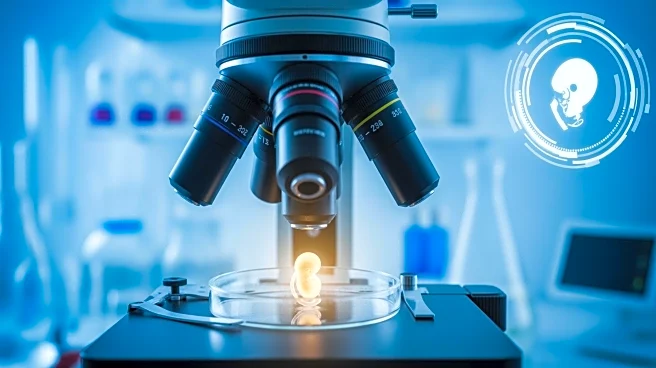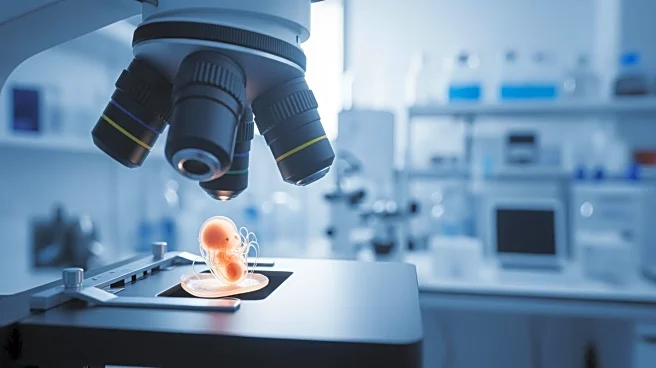What's Happening?
Researchers at the Loke Centre for Trophoblast Research at the University of Cambridge have developed a new technique to observe human pre-implantation embryos in real time, aiming to improve the success
rates of embryo growth and development for in vitro fertilization (IVF). The study, published in Nature Biotechnology, utilized light-sheet microscopy to monitor embryos in 3D without causing damage. This method allowed researchers to observe embryos over a two-day period, the longest continuous observation of this process to date. The study revealed that genetic abnormalities, such as de novo mitotic errors, often occur in cells destined to become the placenta. These findings challenge the current practices in preimplantation genetic testing, which typically involves biopsying these placental cells to assess embryo health.
Why It's Important?
The development of this real-time imaging technique has significant implications for assisted conception technologies. By revealing that genetic abnormalities can arise at later stages of embryo development, the study questions the reliability of current preimplantation genetic testing methods. This could lead to a reevaluation of how embryos are selected for implantation, potentially improving IVF success rates. The findings also suggest that the timing of embryo transfer might need reconsideration, as in vitro culture could increase the risk of chromosomal errors. This research highlights the need for further studies to understand the causes and consequences of these late-stage genetic abnormalities, which could ultimately lead to more effective fertility treatments.
What's Next?
The study advocates for additional research into the underlying causes of late-stage aneuploidies and their impact on embryo development. Researchers suggest that the timing of embryo transfer should be reconsidered to minimize the risk of chromosomal segregation errors. The findings may prompt fertility clinics to reassess their current practices in embryo selection and genetic testing. As the research community continues to explore these areas, advancements in imaging techniques and genetic analysis could lead to improved outcomes for individuals undergoing IVF.
Beyond the Headlines
This research underscores the importance of direct observation in uncovering unexpected findings in human biology. The ability to observe embryos in real time provides a powerful tool for understanding the complexities of human development and the factors that influence successful conception. The study also raises ethical considerations regarding the use of advanced imaging techniques in reproductive medicine, as well as the potential implications for genetic testing and embryo selection.











